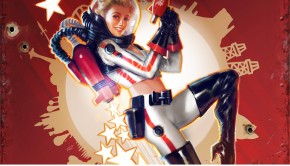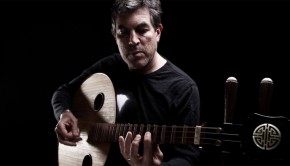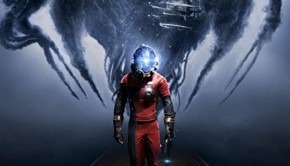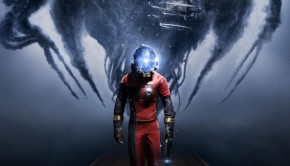Ravi Krishnaswami Interview: COPILOT Music + Sound and Dishonored
Ravi Krishnaswami founded COPILOT Music + Sound with Jason Menkes in 2008, after the duo decided to create a music and marketing group that catered to specific and often unusual requests. You may have heard their music in the 2014 “Viva FIFA Samba of the World” commercial or the Tetris Ultimate trailer featuring a Korobeiniki remix. COPILOT has also formed a working relationship with Bethesda Softworks, for which they’ve created trailer and diegetic music for several games including Fallout, Dishonored, Doom, and Wolfenstein: The New Order.
In this in-depth interview, Ravi Krishnaswami discusses the origins of COPILOT and the journey of its work with Bethesda after contributing some 50s music for Fallout 3. We also extensively discuss COPILOT’s work on the Dishonored series, which recently included a set of in-game songs in Dishonored 2. I had been highly interested in the source of the songs since playing through Dishonored 2 and hearing the street performers that accompany the protagonist across several levels in the game. Krishnaswami describes the process he and Jason Menkes use to plan, write, and execute the music, and how it gets implemented into the game.
Interview Credits
Interview Subject: Ravi Krishnaswami
Interviewer: Emily McMillan
Editor: Emily McMillan
Coordination: Emily McMillan, Garrett Steele
Interview Content
Emily: Can you tell me about your background in music how you founded COPILOT Music + Sound?
Ravi Krishnaswami: I have always been somebody who’s made music. I started out learning piano and violin as a kid, and I ended up studying music in college, but not composition – I studied ethnomusicology. When I graduated from University of Virginia, I had a degree in music and English, and I just wanted a stable job related to music. I got a job at a jingle house called Sacred Noise. I’d heard about this industry of commercial jingles, and they were looking for an assistant – someone to take out trash, answer phones, order lunches, and so on. I started working there and weaseled into one of the studios, and learned Digital Performer, which I’d worked with a bit in college. Once the people who ran the studio saw I was making music, they gave me the opportunity to submit some demos, and I quickly got into writing jingles for the U.S. Army and Pontiac.
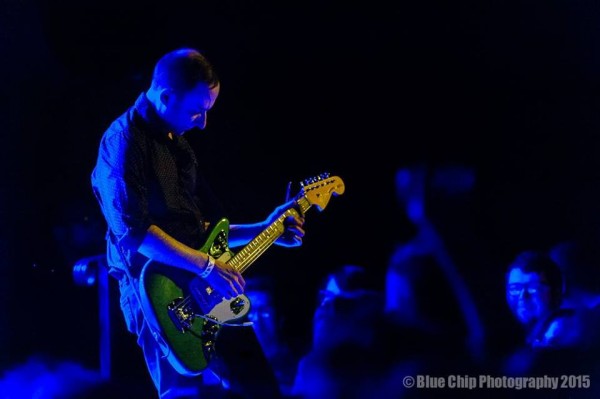
Most of the music I was writing at the time was techno – that’s what people thought of me for, because I was younger than the other guys at the time, and it’s what I was into. I created a career writing underscores for tv commercials. That’s how I met Jason – he was a client of mine at the time who came to the studio to work on the music with me. A couple years later, Sacred Noise was looking for a producer, and he was looking to move over to the vendor’s side. Jason and I were the same age and younger than everyone else at the company, so we quickly began to work together. One of the first projects we brought in ourselves gave me the idea to start my own company. The project was Fallout 3.
Emily: What did you contribute to Fallout?
Ravi Krishnaswami: The marketing of the game involved some 50s-style tv shows and commercials. I haven’t played Fallout 3 – but it’s my understanding that you can find these videos in the game, and they were also used in associated marketing. The domain they had for that game was “prepare for the future” – they had a tv station running online where you saw a lot of these. The PipBoy 3000 jingle, called “Growing Up,” was I think one of the main ones we did.
The people heading that up were not in Bethesda – they were at a place called AKQA – they were a shop in DC that had worked with Bethesda for a long time. I happened to have a friend there who passed my name along. He called me out of the blue and described this project – Jason and I took the project on. It was a very new thing for us, though, creating new tracks that had to sound real within a tight budget. It had to sound like original 50s music – they couldn’t just drop stock music in it.
At the time, they had to learn about the cost and time involved in creating original music, and we had to step out of our more lucrative bubble of creating national advertising – lucrative at the time, anyways. It was something where they were paying more than they’d expected, and we were paid less than we expected, but we made it work. That was one of our defining moments – Jason and I – and we were interested in doing more of this work, where the budget might not be huge, but the field was growing, and we could be creative.
Emily: So you were inspired by that process to create your own company?
Ravi Krishnaswami: Yeah, and in many ways, that project was a test case for us. It was a client we had developed ourselves, organically, we made it work within our budget, we were the same age as the people at AKQA – we wanted to be able to do more of that kind of work without having to justify it to the folks we were working for. We still do advertising work, because that’s our roots.
When we started the company in 2008, Fallout was the only game we’d done, and then a couple years later, we ended up working again with Bethesda on Dishonored, where we did “Drunken Whaler.” At that point, we started to build this relationship where they would be more likely to think of us when projects came up, but also think about how our skills could fit into their work. We could create a niche for them in really creative, unique music. A lot of the music we did for them has focused on songwriting, and bringing that into the game. Since working with Bethesda, we’ve also done gaming work outside of them – we’ve worked with Ubisoft, for example. It’s a really fun place to be.
Emily: When you have a client come to you, how do they request pieces, and how do you accommodate that? I remember “Drunken Whaler” had a children’s chorus as well as female voices, which didn’t come from you or Jason.
Ravi Krishnaswami: Yes, that was a challenge! The lyrics are pretty violent, not something we could really get kids to sing, but we did use a children’s chorus and added some duct tape behind the scenes to make it all work. [laughs] Jason and I have developed a thorough process for looking at a project and thinking about where we can go with it creatively, and what talent we’ll need to make it happen. We’re good at working within constraints.
For example, we were contacted about scoring an announcement trailer for Battlecry, which ended up not coming out. You might have heard about it – it was a free-to-play multiplayer that they were working on. When they came to us for that project, they had a lot of very big cinematic reference tracks that they were listening to. You know – stuff like Ennio Morricone. But we knew that we were not in a position to go out and work with a 60-piece orchestra. So I ended up writing a score that used guitars and a small number of brass and percussion players to really get a huge sound to support strings that were not live. I could have written a theme for first violins, but we would have had to really bust the budget to find a section of strings, or it would have sounded like samples.
A lot of what we do is diagnosing the problem. What is the music going to do? Where is it going to come from? As we’ve worked with Bethesda over the years, we’ve developed a relationship with them where we can come in earlier into the discussion and be part of the brainstorming process a little bit. For example, when we worked on Fallout 3, it was fairly well-defined when they came to us – they needed jingles for these pieces with lyrics that transmit this exact information. But for Dishonored 2, we really started talking to them well before we started writing the music, just brainstorming. What do these street performers look like, sound like? How will they be in the game? What stories should they tell?
Emily: So your work on Fallout led you to work on Dishonored?
Ravi Krishnaswami: Yes – Dishonored was not through AKQA, but Bethesda had worked with us at this point and invited us back for Dishonored.
Emily: Did they ask you to do “Drunken Whaler,” or was that track your suggestion?
Ravi Krishnaswami: They had the idea of taking this old public domain sea shanty and reworking it to fit the universe. When they came to us and started describing it to us, saying what kind of footage they would be showing in the trailer, what the sequence of events would be, we started thinking how that should influence the song. That included what set of lyrics we would use, what kind of tempos and meters we should use, the level of energy, the vocal quality – what felt right with all of these different factors. I remember listening to Tom Waits for ideas – not vocally, but ideas about the instrumentation. How to make this feel really unique and dark and weird, and very physical. One of the things in that trailer is the main percussiveness – that’s me, Jason, the creative at their agency Rokkan, and the brand manager of Bethesda at the time all stomping on a wooden board, so it had a boots on a whaling boat kind of sound. [laughs]
Emily: I remember there’s also a sequence in one of the trailers that shows different ways the main character can kill people, and each time you see a new death, it’s accompanied by a percussive beat and specific lyric.
Ravi Krishnaswami: The trailer wasn’t really cut when we started writing the music. We actually had a really interesting process in doing this. We knew that they were going to include a sequence of ways to kill people in the game that would be featured in the trailer. In thinking of how to do that before the trailer was fully cut, we suggested to them that we would record a bunch of lyrics that they could choose from that all featured ways to die. Then we sent it to Bethesda’s in-house editor, and she had that to work with and had a lot of freedom to say, “Okay, the lyric ‘Slice his throat with a rusty cleaver” – I’ve got a great shot for that.” One said “shoot him in the gut with a loaded pistol” – and so on.
What was great about that was that Jason and I got to create an experience for the client where they appreciated that we really created something, instead of just going out and finding something. We could give the editor a whole basketful of options to cut the trailer with.
Emily: There were two versions of “Drunken Whaler” – the trailer version and the full version included with the soundtrack. Did you cut both of those?
Ravi Krishnaswami: Yes, that was us. I’ve worked with the in-house editor at Bethesda for a while now, and it’s usually a back-and-forth. We wrote a version that was clearly longer than they would need for the trailer, which became the basis for the version on the soundtrack. She started cutting up the music, but she would send us the trailer back with the music cut up, and I would take the music and rearrange it and send it back, and so on. So she had the freedom to do whatever she wanted on the trailer, but because we kept that open communication, I was also able to take her work and fix it as well.
Emily: For Dishonored 2, you had to take a totally new sound because it’s in this Mediterranean area. What task were you given for that game?
Ravi Krishnaswami: Well, it’s odd, because we first worked on the “Gold Dust Woman” trailer. That was a very straightforward assignment once they’d decided they wanted to license that piece, and we’d figured out what we wanted to do with it. As for the songs, it was very open-ended, and it wasn’t clear to me exactly how the music would be used.
They basically came to us and said we’d like to have street performers in the game that the player could discover. The players would make the game fuller and richer, and the lyrics would help fill in some of the folklore and history. That seemed like a really interesting idea to me.
When they came to us, I was midway through reading the Game of Thrones series, and I loved how in those books, singers are used to highlight recent history events in the world, and transmit the history from town to town. You get commentary on the world by what the singers are singing, and you get perspective from it.
Emily: I noticed that about the songs – often when you hear in-game songs, the lyrics are more symbolic, and open to interpretation. The point is that you could listen to the lyrics outside of the game and while you might be missing context, the meanings of the songs would make sense on their own. That’s not really the case with the Dishonored 2 songs – there’s no way you could listen to any of the songs and be unaware that there’s an entire story you’re missing. They’re very tailored to fit the game.
Ravi Krishnaswami: Yeah, I’m glad that came across. They told us about what they were looking for. There was a general sense that it was going to be two performers, but it was unclear until about midway through production that it would definitely be two performers who both sing and play, and they would have the same instruments each time. These were questions I had as I was going forward with arranging these songs. This was a project where I was really looking at it as a process with a bunch of stages – a conceptualizing stage, an arranging stage where we knew what instruments we’d have, and then the recording process, which got into casting the voices.
We had a lot of time to work on this, so having a good amount of time and a real step-by-step process sort of allowed us to be really thoughtful about the songs, and not just looking at a couple of NPCs and writing a couple of things on the fly. We actually didn’t see the characters until well after the songs were finished.
Emily: Were you informed that it would be a male-female, violin-bouzouki duo, or was that your choice?
Ravi Krishnaswami: It was…somewhat told to us, but some of the decision making was informed by how I arranged the original demos. When I started arranging the original songs, we didn’t have those things decided. The fact that the female voice, for example, is a pretty high, young-sounding voice – it’s actually the same singer from the “Drunken Whaler” trailer from Dishonored 1, and the fact that her voice is very high and childlike, and the male’s voice is super low and gritty – was somewhat inspired by the concept of the game – how you could play as Emily or Corvo. But, it was also a musical decision on my part, because I looked at this and said, okay, I’ve got two voices, two instruments – how can I give myself as much expressive range to work with as possible? So if I picked a very low male and very high female, I had more to work with.
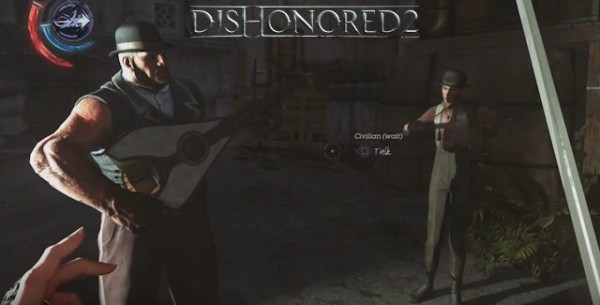
As for the instruments, it was a bit of a process where we experimented with some things. They sent us some Greek music, some gypsy music, some Russian music – all inspiration for what this culture might sound like, in a musical sense. The recordings they sent us had a number of different instruments, including accordion, upright bass, percussion, other woodwinds, and so on. On the early demos, I experimented with accordion and bass. When I sent in all the instruments, and got feedback, we were able to settle on the violin and bouzouki.
Developing the ideas for the songs was the most interesting part of the process, from my perspective. Arkane Studios gave us a book of lore to get to know the world better. They gave us the first game to play, but I’m a very remedial gamer. I can’t move the camera and walk at the same time! [laughs] But after doing the first game, I had a hunch that there would be a sequel so I went back and played the first game to get more an idea of the vibe. I also wanted to hear Dan Licht’s music, to get a sense of what that was like in the game. They’d sent me some of the music when I worked on the first trailer.
So when we get the call for the second game, they send us this book of lore, and a document that outlines everything about the new game. Everything they knew, anyways – the story, how much time has passed, who’s in charge, the fact that the game’s moved down to Serkonos, what Serkonos is, which characters will be encountered, and so on. It gave us an overview of the game. We started spitballing ideas for songs – for me, it reminded me of those Game of Thrones songs, as well as Victorian literature.
Emily: Yes, I think the game does have dates in it, but it also has this strongly imperialist vibe.
Ravi Krishnaswami: So I have this old Norton anthology of English literature that I kept from college. I had no idea why I kept it, but it was useful now! So I kept the book on my desk and would sometimes open it up to look at different poetry to get a sense of how people wrote and what the lyrics would sound like.
When we talked to the folks at Bethesda, we would throw out ideas from the game. What if it was a song about whaling? What if it was a song about the coup? What about a miner song? These really basic ideas. I kept little sticky notes and would write down ideas. We ended up with about twenty ideas, but we knew we were only writing a handful of songs. I spent a couple of weeks with these ideas, reading through literature in the meantime.
We finally did what we call song briefs – I don’t know if that’s a process everybody does in this industry, and if so, I’m not sure everybody calls it that. Jason and I developed this process a while ago for writing original songs for Wolfenstein when we did an album of 60s rock music in German. The point is to put one foot in front of the other and carefully discuss what we’re going to do before actually starting anything. We don’t want to write a bunch of songs, send them all in, and have people go through all the songs saying, “no, no, that’s not what we want; you need to go back to the drawing board.” Instead, we have a clear conversation about exactly what the song will be about, what it will sound like, and so on. We have more of a thought-out communication ahead of time.
So for the song about silver mines, we said, okay, this would be a protest song, it would take the perspective of someone who works in the mines, and the song will list all the different problems that a miner encounters. So the brief describes all the lyrical content, a general approach (up-tempo, a bar song, a beautiful waltz), and so on. After each song brief, I would write a stanza of lyrics to give an idea of where they would go. I wrote one stanza of lyrics for 15 different songs.
Emily: But only about four of those made it in?
Ravi Krishnaswami: There’s four that are currently out in the world. There’s a bit more material that we’ve worked on, but I don’t know if it will see the light of day.
Emily: Is there any official release for the songs planned?
Ravi Krishnaswami: I would love to see that. As is the case with most gaming projects, we write the music, but then we sell it to our clients, and then they own the music. It’s really up to Bethesda and Arkane to see what they do with the music. We would love to see them be out in the world in a more official context than gameplay captures.
Emily: To clarify, you were interacting with Bethesda this whole time – not Arkane?
Ravi Krishnaswami: Correct. Arkane was very involved, but they always sent us feedback via Bethesda – Bethesda was our point of contact. Occasionally we’d get a verbatim note back from Harvey. In fact, when I created the song brief document and sent it in, it was sent back with Harvey’s notes – they were great, wonderful. They didn’t say, “This is wrong, I don’t like this,” but instead, “If you’re going to write about this topic, here’s history of the character or street or whatever.” He wanted to give us as much information as possible so we could write contextual music. So anyways, they were involved, but it was routed through Bethesda.
Emily: Did you interact at all with Dan Licht during either of the games? You mentioned that you received his scores to the games.
Ravi Krishnaswami: No, I never had the opportunity – it was just never part of our process of what needed to happen. I certainly got to know his work on both games pretty well, mostly so that we could understand the context of what we were doing. Obviously they weren’t bringing us into this project to be Dan Licht, or to rip him off. They brought us in because we provided a different voice and process for creating some of this music. It’s important to know what that universe is, where it will exist. In some instances, I’ve seen gameplay capture where our singers are singing, and instead of the instruments, you hear Dan Licht’s score that’s triggered for being in that particular area or starting a particular event. It might not even be in the same key as what the singers are singing, but it’s really interesting.
Emily: I actually thought part of what worked well in context. The songs are very raw, which does make them very removed from the cinematic parts of the game like the original soundtrack.
Ravi Krishnaswami: I will say that we certainly wanted to complement Dan Licht’s score with our work. We actually had a wink to Dan Licht’s music in the “Gold Dust Woman” arrangement. That was something we very much wanted to do, just to thread the needle. We wanted to do something original, but also something uniquely Dishonored, so we thought we’d be crazy to not include a dulcimer in the song, to give you that connective tissue! [laughs]
Emily: “Gold Dust Woman” reminded me a lot of the song used at the end of the first game – “Honor for All” – which was Licht’s track in the credits of the first game. There were a lot of commonalities. It’s a more modern-sounding end credits song, it has the potential to sound out of place but doesn’t due to the ‘connective tissue’ instrumentation, as you put it, that binds it to the rest of the soundtrack.
Ravi Krishnaswami: My understanding of it was that “Sands of Serkonos” was the closing song?
Emily: There are three – “Sands of Serkonos,” “Brigmore Lullaby” – which was written by one of the directors of the game, I think – and then “Gold Dust Woman.”
Ravi Krishnaswami: Oh, okay! I didn’t realize that was in the end credits! [laughs] This is why I need people who play games. It just goes to show – it’s a mystery to me what happens to my music after I send it in. Once it’s done, it’s completely out of my hands.
Emily: Is there any sense of trepidation at that point – because you’re not totally sure what will happen to your music?
Ravi Krishnaswami: Of course. I’ve worked on music in media for so long that I sort of have that reflexive attitude that whatever can go wrong, will go wrong. If it doesn’t, then it’s a nice day. I’ve worked on many ads where we’ve sat in the room with the clients, slaving away on these songs, and we just get it perfect and it sounds amazing. But then I hear the commercial on tv and it’s a voiceover with a very tiny bit of our music in the background. Then we sort of have to say, well, okay! It’s always a gamble. It comes with the territory.
Our job, working with a big company like Bethesda, is to really give them great work, and make it as easy as possible for them to do their job, and not to worry about us. If they want to work with somebody who’s got a million questions and is on tour half the year, or someone who’s got attitude – well, they can do that. But working with us – I’m a behind-the-scenes guy, and I get the job done. I mean, I put all my creativity into it, but it’s also not about me or my songs at the end of the day; it’s about their project.
In the first Dishonored games, we brainstormed the idea to put the stems from “Drunken Whaler” online, and have people remix the song. I think one of the versions was actually used in a later trailer. The response to that song was very immediate, so we were aware of that and wanted to help them work with that. It’s not that I stop as soon as the music is in and done. My job is to work with them as a composer and bring as much value to the project as possible. Create something new.
I’m keeping an eye on how these songs were integrated. There were some gameplay captures where some of the stems were out of sync, which was probably one of the most frustrating things I saw. But I know they’ve been working on the technical issues, so I hope that’s one that’s fixed.
Emily: When did you know that “Sands of Serkonos” would be the end credits song?
Ravi Krishnaswami: The first time I heard about that was actually when my friend and former student Garrett (Steele) sent me some links to the music in the game, and I saw that it had been listed as the end credits song in the description or in a comment. I’ve seen some comments on some of the uploads about how the lyrics on that song work really well for the end credits which is nice. I put a lot of work into taking a spin on a romantic song, and filling it with visuals from that world, filling it with danger.
Emily: Yeah, because the ending of the game is very dependent on how you play it, and the song is like that – the first half is very romantic, as you said, and the second half is incredibly depressing.
Ravi Krishnaswami: It’s interesting trying to create music from a world. Unlike some songwriters, when I write music, I’m not inspired by my life or anything, but by the world I’m writing for. What I had in front of me was the stories of the world and what was going on in this game. Wouldn’t it be cool if it were this guy and girl singing to each other, and you see their romance through these two filters? One verse before the place got really shitty – and one verse after. [laughs] I thought that would be a really cool contrast. I feel like Dishonored is a lot about contrast – light and dark. Visually, there’s a lot of sunlight in Serkonos, but darkness in the city, and the story ends differently depending on how you play it. You can also play through as Corvo or Emily. Lots of contrasts, and I tried to play with that as much as I could in these songs.
Emily: That’s also reflected in your music against Licht’s score, which is very dark, dissonant, and ambient. Even the darkest of your songs are still folksy and melodic.
Ravi Krishnaswami: One of the real challenges of working on this was that it would be really easy for us to get carried away with all the folklore and history of the world, and also the vibe. It’d be easy to write music that goes beyond what a pair of street performers would believably be playing. Like you said, it’s folk music. So that actually made us have to really look at what they would realistically perform in the street. These are folk people who go from town to town playing tunes they know well. They have to be believable, and simple, in these ways. It was challenging figuring out what they’d do, because the reference music we had was all instrumental, and we couldn’t do crazy violin solos in between stanzas.
There’s another detail I wanted to mention about the lyrics. There’s so much that went into the lyrics – I could talk about this forever. This was one of the most creative projects I’ve ever worked on – I had so much fun with it. There’s a song called “The Coup” which has some trivia in it. Early in the process, one of the big questions I had was where the street performers stand politically in the game. Were they behind the Duke, or were they behind Emily? We didn’t really get a clear answer because the characters didn’t exist yet. So I wrote two sets of lyrics for “The Coup” and sent them both in – one in favor of the coup against Emily, and one against it. They were very similar – you could easily put them side by side. For example, one of the lines of the pro-Emily lyrics said, “Life seems so easy for our sweet empress,” and in the pro-Duke version, that same line was, “Ill-prepared she was, our false, sweet empress.”
We ended up with a lyrics sheet that was basically about the performers who have an opinion, but mostly want to stay out of trouble. The final lyrics sheet ended up more detached from either perspective, but I love how the guy acknowledges that at the end. He says, “I’m just a poor singer / telling my tale / and if I tell it wrongly / I’m dead as a whale.”
Emily: That reminds me a bit of the songs in Skyrim – one of the tavern songs has three sets of lyrics that play depending on which faction that particular area supports.
Ravi Krishnaswami: I’m actually just starting to play Skyrim! I love when music does that. I would have loved to record both versions. For this version, we let Arkane choose, and I think they chose the pro-Emily version. But it’s almost imperceptible that there’s a political opinion in it, other than the wink at the end. They’re meant to be a backdrop of folk singers, not political figures.
Emily: Thanks so much for chatting! I was very enthusiastic to learn more about those songs, so I appreciate you sitting down with us.
Ravi Krishnaswami: I was very excited to talk about this. I can’t think of a lot of professional projects where I can say, boy, I really enjoyed those last few months. Usually projects that go on that long, I’m incredibly ready to be done with them. For this project, by the time we got to the end, I was thinking, “Could we please do more of these? I’m just getting started – I want to write a whole album!” It was so fun and I really enjoyed thinking about it again.
Posted on March 9, 2017 by Emily McMillan. Last modified on March 9, 2017.

